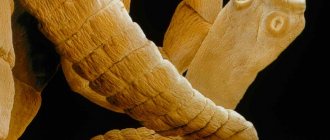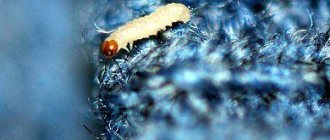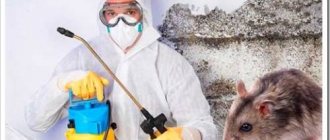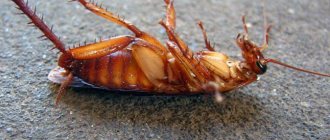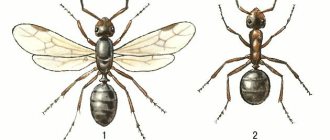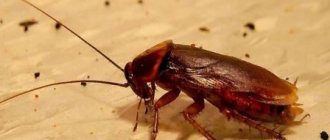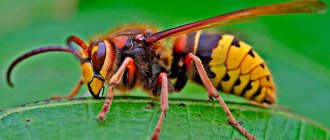Mushrooms
0
1520
Article rating
Kira Stoletova
There is a type of fungi that feeds on dead remains, and there are those that consume the nutrients of living organisms. Saprophytic fungi settle and feed on the remains of animals or plants (scavengers), or excrement.
Description of saprotrophic fungi
The meaning of mushrooms in nature
Nutrients decomposed by mushrooms are subsequently absorbed by other plants. Living creatures (animals and insects) feed on cap species. There are also mushrooms that are specially grown artificially. These are champignons and oyster mushrooms. Mold fungi (aspergillus, penicillium) are used to produce antibiotics and even hard cheeses. Ergot (formed on cereal crops) is used to combat malignant tumors.
Many parasitic fungi cause harm to living organisms and plants, causing diseases. Considerable damage is caused to wood. It is not recommended to use contaminated building material for wooden buildings. Since the mushroom culture can cause fatal poisoning, experts advise collecting it with great caution.
Edible and inedible species
Among the variety of saprotrophs, lamellar, marsupial and tubular species, which are among the highest, and imperfect molds and yeasts stand out.
Some marsupial, lamellar and tubular saprotrophs are suitable for human consumption. So, edibles include:
Not suitable for consumption and are poisonous:
Almost all types of yeast are used in the food industry and winemaking, and a representative of molds, penicillium, is a source of raw materials for the production of antibiotics.
Symbiont mushrooms
Symbiosis is the cohabitation of different organisms in which both benefit. Symbiont fungi participate in the formation of two symbioses:
- lichens formed as a result of interaction with algae and bacteria;
- mycorrhiza - with the root system of plants.
Nutritional Features
Mushrooms, entwining the small roots of plant organisms, feed on the organic substances that make up their composition. Such actions do not harm plants, but promote the absorption of nutrients (nitrogen, phosphorus, microelements) and water from the soil.
Names and descriptions of popular symbiont mushrooms
Typically, cap mushrooms are classified as a mixed type of nutrition, which can receive organic substances from both plant roots and humus.
- Boletus. Interacts with aspens, oaks, willows and poplars. The brown hemisphere-shaped cap has a reddish or orange tint. It is impossible to separate the layer of skin without pulp. The height of the gray leg is up to 18 cm. The fruit body is fleshy and dense. Young individuals are elastic, while old ones become loose. At the break, the white flesh turns blue over time and then turns black. Does not have a pronounced aroma.
- Boletus. Grows near birch roots. Over the course of its life, the mushroom cap changes from a spherical shape to a flat, pillow-like shape. At high humidity it becomes sticky to the touch. The white pulp with a dense structure oxidizes at the cut site. In older individuals it becomes watery and loose. Cylindrical leg covered with dark gray scales.
- Oiler and saffron milk cap. They live under coniferous trees. Butterflies are characterized by a slimy skin that appears to be coated with oil. Hemisphere-shaped hats reaching 16 cm in diameter are painted in a spectrum of colors from brown-chocolate to yellow-brown. As they grow older, the shape straightens out, becoming flat. The color of the stem is usually lighter. The pulp is juicy. The saffron milk cap is characterized by a round cap with concentric circles and a depressed center. The orange pulp oxidizes when it comes into contact with air, acquiring a greenish tint.
If you destroy the host tree, the mushrooms growing underneath will also disappear.
Saprophytic mushrooms
Saprotrophic organisms (decomposers, saprophytes) feed on organic compounds obtained as a result of the destruction of dead animals and plants.
Features of structure and nutrition
Saprophytes include many large fungi, consisting of a large number of light spores, allowing them to spread effortlessly to other food sources.
This population of fungi prefers to settle on plant debris:
- fallen needles, foliage;
- feathers and horns;
- twigs;
- cones;
- stems of annual grasses;
- tree stumps
Saprophytes extract nutrients from dead sources. Depending on the substrate, certain types of mushrooms grow.
Examples of saprophyte fungi
Since all living organisms have a beginning and an end, saprophytes play an important role in the cycle of substances, destroying natural biomass consisting of monoorganic substances. Edible mushrooms include:
- morels;
- dung beetles;
- Champignon;
- umbrellas.
Among saprotrophic organisms there are also unsuitable for food, which pose a danger to human life.
Structure and nutrition
In most cases, saprotrophic fungi produce a large number of light spores. Another feature of them is their watery pulp, which protects them from the influence of external factors. The mycelium is voluminous and consists of numerous thin threads - hyphae. The color and shape of mushrooms vary, but the most common are yellow, white, red-white and beige.
Soprophytes feed on dead organic material
Based on their habitat and feeding method, they are conventionally divided into several groups:
- xylotrophs (woody): feed on decaying wood;
- coprotrophs, or coprophages (dung): consume organic compounds from animal excrement;
Irina Selyutina (Biologist):
Fungi that settle on animal excrement and feed on it are called coprobionts. They, like other coprophages, contribute to the circulation of substances in nature, accelerate the destruction of organic residues and humification of the soil, which increases its fertility, and helps improve the sanitary condition of pastures and recreational areas.
- humus: prefer fallen leaves, humus soil layer, litter;
- carbotrophs: grow on fires and fires, where there is a lot of carbon in the remains of burnt plants;
- bryotrophs: decompose dead mosses;
- mycotrophs: absorb the remains of mummified fruiting bodies of cap mushrooms, mainly milk mushrooms and russula.
Mushrooms are parasites
Unlike fungi, which perform useful activities, parasitic organisms do not benefit the host plant, but destroy it during their lifetime. Tree infection occurs through damaged bark. Fungal spores, transported by air flow, penetrate through bare areas and settle on wood.
To avoid infection of fruit trees, it is necessary to take preventive measures in a timely manner: watering in the summer months, shelter for the winter, isolating wounds with garden varnish. If a parasitic growth appears on the trunk, it is recommended to destroy the tree, preferably burn it.
Appearance and nutrition
Parasitic fungi are either annuals or perennials that can live up to 25 years. Different species of individuals differ from each other in color, shape, structure, size and life expectancy. The shape of the fruiting bodies is hemispherical or cap-shaped , and also similar to a hoof or the tip of a pike. There are also shapeless growths in the form of convex or layered bodies. Perennials are capable of gaining up to 10 kg of weight and growing to a size of one meter. The color spectrum of parasites is also diverse. The structure of the body is similar to wood or soft skin.
When settling on living plants, fungi feed on organic substances from living cells of the host. As a result, the tree suffers enormous damage. Having settled on agricultural crops, they lead to the formation of dangerous diseases and reduce yields.
Some parasites are able to adapt well to the host, stimulating its development in the initial stage. They feed on the growths formed, without developing mycelium inside the tree.
Edible types of parasitic mushrooms
Cap mushrooms are usually classified as saprotrophs. Less common are parasites, such as honey fungus. Entering into symbiosis with the root system, the fungi penetrate it with mycorrhizae, entwining the root processes.
The presence of a ring on the stem of the honey fungus formed the name of the mushroom. Prefers to grow in large colonies. It is salted, fried, pickled. Valued for its high mineral content. Just 100 grams of product contains the body’s daily need for these elements.
Since honey mushrooms cause wood rot, they are dangerous parasites. The black laces of the mycelium penetrate the bark and, releasing toxic substances, affect the wood. As a result, a young tree may die within 1-3 years. The old specimen dies after 10 years. Once a fungus settles on a tree, its growth slows down. The protective substances that the tree produces cannot stop the process, but only slow it down.
A parasitic fungus that feeds on tree sap is the tinder fungus. There are several varieties of this population. Although there are very few poisonous representatives, they are mainly used in cooking due to their solid body. Some species are considered delicacies. The sulfur-yellow tinder fungus tastes like chicken meat. In some countries, tinder fungi are specially cultivated on farms.
Young specimens of polypores collected on deciduous trees should be eaten. Individuals growing on coniferous trees are at risk of mild poisoning. Experienced mushroom pickers recommend eating only well-known mushroom populations.
Main differences between saprophytic fungi and parasites
It is incorrect to assume that any microorganisms that feed on organic food are parasitic. Parasites include those organisms that survive at the expense of others. They can settle both inside a body and outside.
Saprophytes feed only on the remains of plants or animals. These include soil and mold fungi, as well as mold bacteria. Thus, the main differences between saprophytes and parasites are several features:
- Method of existence and nature of nutrition of organisms: parasitic individuals feed on the organic structures of a living host; saprophytes live on dead plant bodies.
- Unlike parasites, saprophytes usually do not cause harm to the human body.
- The habitat for saprophytes can be both living and non-living structures. Parasites live only in a living organism.
In some cases, fungi turn from parasites into saprophytes, which initially settle on living plants, and after their death continue to live, feeding on dead wood. Such fungi are called symbionts.
Ecology DIRECTORY
These forms are found throughout terrestrial communities, but are especially abundant in the uppermost layers of soil (including litter). The process of decomposition of plant residues, which consumes a significant share of the respiratory activity of the community, in many terrestrial ecosystems is carried out by a number of sequentially functioning microorganisms (Kononova, 1961).[...]
Saprotrophs are organisms that feed on dead organic matter or animal excrement. These include bacteria, achtinomycetes, fungi, and saprophytes (parasitic flowering plants and some algae). Among animals, saprotrophs (saprophages) are carrion beetles, dung beetles, earthworms, hyenas, vultures, crows, etc. Saprotrophs play a significant role in the cycle of substances, performing the function of decomposers. [...]
Saprotrophs are heterotrophic organisms that use organic matter from dead bodies or excretions (excrement) of animals as food. These include saprotrophic bacteria, fungi, plants (saprophytes), and animals (saprophages). Among them there are detritivores (feed on detritus), necrophages (feed on animal corpses), coprophages (feed on excrement), etc. [...]
There are about 100 thousand species of mushrooms. Fungi are heterotrophs. Parasitic fungi cause plant diseases such as smut, ergot, rust, and powdery mildew. Saprophytic fungi play an important role in the cycle of substances in nature, mineralizing the organic remains of dead plants and animals. Together with many bacteria, they are decomposers.[...]
Among saprotrophs, bacteria and fungi inhabiting a body of water are probably equally important. They perform a vital function by decomposing organic matter and restoring it to inorganic forms, which can again be used by producers. In unpolluted limnic zones they are less numerous. The distribution and activity of microorganisms in the aquatic environment are discussed in Chap. 19.[ …]
Among the auricularia fungi there are both saprotrophs and parasites on plants, insects and other fungi.[...]
Most heterobasidial fungi are saprotrophs on rotting wood, but parasites are also found. Relatively many heterobasidial fungi parasitize the fruiting bodies of other fungi.[...]
Many species are saprotrophs, but there are also representatives that parasitize other fungi.[...]
Parasitism among them is an exceptional phenomenon, but these exceptions have a certain economic significance.[...]
It grows in large groups on dead trunks, stumps and brushwood of deciduous trees such as aspen, birch, linden, willows, poplars, elms, oaks, etc. Fruiting bodies can appear from spring (hence the name of the mushroom) until late autumn. In a number of countries in Europe, North America, as well as in Russia, oyster mushroom is bred in culture from mycelium grown in laboratory conditions.[...]
This family unites a small group of helociaceous fungi, characterized by relatively large club-shaped or spatulate fruiting bodies. With rare exceptions, they are almost always ground saprotrophs; their fruiting bodies can reach 10 cm in height and 2 cm in diameter. The fruiting bodies of geoglossaceae have a well-developed stalk, and in structure they are modified apothecia, in which a convex disk has grown into an elongated upper part of the fruiting body and the hymenin covers the outer surface of the cap thus formed (Fig. 112).[...]
Heterotrophic organisms consume only ready-made organic substances. These include all animals and humans, fungi, etc. Heterotrophs that consume dead organic matter are called saprotrophs (for example, mushrooms), and those that are able to live and develop in living organisms at the expense of living tissues are called parasites (for example, mites). Organisms enter into complex trophic interactions with each other, thereby performing the most important ecological functions in biotic communities. [...]
Heterotrophic organisms consume only ready-made organic substances. These include all animals and humans, fungi, etc. Heterotrophs that consume dead organic matter are called saprotrophs (for example, mushrooms), and those that are able to live and develop in living organisms at the expense of living tissues are called parasites (for example, mites). Organisms enter into complex trophic interactions with each other, thereby performing the most important ecological functions in biotic communities. [...]
The second group of organisms - consumers, or heterotrophic organisms - carry out the process of decomposition of organic substances. These organisms use organic matter as a source of nutritional material and energy. Phagotrophs feed directly on plant and living organisms. These include all large animals. Saprotrophs use organic matter from dead remains for nutrition. These include mainly bacteria and fungi.[...]
One form of species interaction in which both partners benefit is called “symbiosis.” Symbiotic relationships are widespread in nature, based mainly on trophic or spatial relationships. Everyone is familiar with lichens - organisms consisting of fungi and algae. There are different points of view on the essence of the relationship between a fungus and an algae in a lichen: either as a symbiosis, when the fungus supplies the algae with water, inorganic salts, and the algae “supplies” the fungus with organic substances, or as parasitism, especially manifested by the fungus, which uses even dead algae cells, that is, it manifests itself as a saprotroph. In any case, the fungus provides the algae with protection, allowing it to survive in dry habitats, where it cannot exist as an independent organism. [...]
Biocenoses can be considered as natural systems of interdependent two groups of organisms - autotrophs and heterotrophs. Heterotrophs cannot exist without autotrophs, since they receive energy from them. However, autotrophs cannot exist in the absence of heterotrophs, or more precisely, in the absence of saprotrophs - organisms that use the energy of dead plant organs, as well as the energy contained in the excrement and corpses of animals. As a result of the vital activity of saprotrophs, mineralization of the so-called dead organic matter occurs. Mineralization mainly occurs as a result of the activity of bacteria, fungi and actinomycetes. However, the role of animals in this process is also very large. By crushing plant residues, eating them and excreting them as excrement, as well as creating more favorable conditions in the soil for the activity of saprotrophic microorganisms, they accelerate the process of mineralization of dead plant organs. Without this process, leading to the entry of available forms of mineral nutrition into the soil, autotrophic plants would quickly use up the available reserves of available forms of macro- and microelements and would not be able to live; biogeocenoses would turn into cemeteries overflowing with the corpses of plants and animals.[...]
The main function of the decomposition process has always been considered to be the mineralization of organic matter, as a result of which plants are supplied with mineral nutrition, but recently another function has been attributed to this process, which is beginning to attract increasing attention from ecologists. Apart from the fact that saprotrophs serve as food for other animals, the organic matter released into the environment during decomposition can greatly influence the growth of other organisms in the ecosystem. Julian Huxley in 1935 proposed the term “extrinsic diffusing hormones” for chemicals that have a correlative effect on a system through the external environment. Lucas (1947) proposed the term “ectocrines” (some authors prefer to call them “exocrines”). The term “environmental hormones” expresses the meaning of the concept well, but most often the term “secondary metabolites” is used to designate substances secreted by one type and affecting others. These substances can be inhibitors, such as the antibiotic penicillin (produced by mold), or stimulants, such as various vitamins and other growth substances, such as thiamine, vitamin B2, biotin, histidine, uracil and others; the chemical structure of many of these substances has not yet been elucidated.[...]
The metabolism of the system is carried out due to solar energy, and the intensity of metabolism and the relative stability of the pond system depend on the intensity of the supply of substances with precipitation and runoff from the drainage basin. [...]
Decomposition involves both abiotic and biotic processes. However, usually dead plants and animals are decomposed by heterotrophic microorganisms and saprophages. This decomposition is the way in which bacteria and fungi obtain food for themselves. Decomposition, therefore, occurs due to energy transformations within and between organisms. This process is absolutely necessary for life, since without it all nutrients would be tied up in dead bodies and no new life could arise. Bacterial cells and fungal mycelium contain sets of enzymes necessary to carry out specific chemical reactions. These enzymes are released into the dead matter; some of the products of its decomposition are absorbed by decomposing organisms, for which they serve as food, others remain in the environment; in addition, some products are eliminated from the cells. Not a single type of saprotroph can carry out complete decomposition of a dead body. However, the heterotrophic population of the biosphere consists of a large number of species, which, acting together, produce complete decomposition. Different parts of plants and animals break down at different rates. Fats, sugars and proteins decompose quickly, but plant cellulose and lignin, chitin, animal hair and bones decompose very slowly. Note that about 25% of the dry weight of the herbs decomposed within a month, and the remaining 75% decomposed more slowly. After 10 months 40% of the original mass of herbs still remained. The remains of the crabs had completely disappeared by this time.[...]
They are less specialized morphologically than biochemically, so their role in the ecosystem usually cannot be determined by such direct methods as visual observation or population counting. Organisms, which we call macroconsumers, obtain the necessary energy in the process of heterotrophic nutrition, digesting organic matter, which they absorb in the form of more or less large particles. They are the “animals” in the broad sense. Morphologically, they are usually adapted to actively searching or collecting food, and their higher forms have well-developed complex sensory-motor nervous systems, as well as digestive, respiratory and circulatory systems. Microconsumers, or saprotrophs, used to be often called “decomposers” (destroyers), but research about two decades ago showed that in some ecosystems animals play a more important role in the decomposition of organic matter than bacteria or fungi (see, for example, Johannes, 1968). . Therefore, apparently, it would be more correct not to define any one group of organisms as “destructors”, but to consider decomposition as a process in which all biota, as well as abiotic processes, participate.[...]
The world of bacteria is large, their species composition is diverse. Some of them lead a symbiotic lifestyle. These include nodule bacteria that are in symbiosis with legumes. Nodule bacteria assimilate atmospheric nitrogen and convert it into nitrogen-containing organic compounds. At the same time, they are ecologically dependent on legumes, which provide them with energy. With dying nodules and roots of leguminous plants, nitrogen-containing organic substances enter the soil and enrich it with nitrogen. In some herbaceous phytocenoses, including soils rich in nitrogen, legumes are absent. And despite this, nitrogen fixation occurs there. Nitrogen fixation of atmospheric nitrogen by bacteria is not the only source of enrichment of soils with nitrogen-containing compounds. In pasture BGCs, the soil is enriched with nitrogen from the excrement of grazing farm animals. The decomposition and mineralization of feces is carried out by a special group of coprotrophic bacteria. Due to the enrichment of soils with nitrogen-containing substances from animal feces, the number of soil microorganisms in pastures is usually higher than in hayfields. Bacteria-phytoparasites have less effect on herbaceous vegetation than pathogenic fungi.[...]
